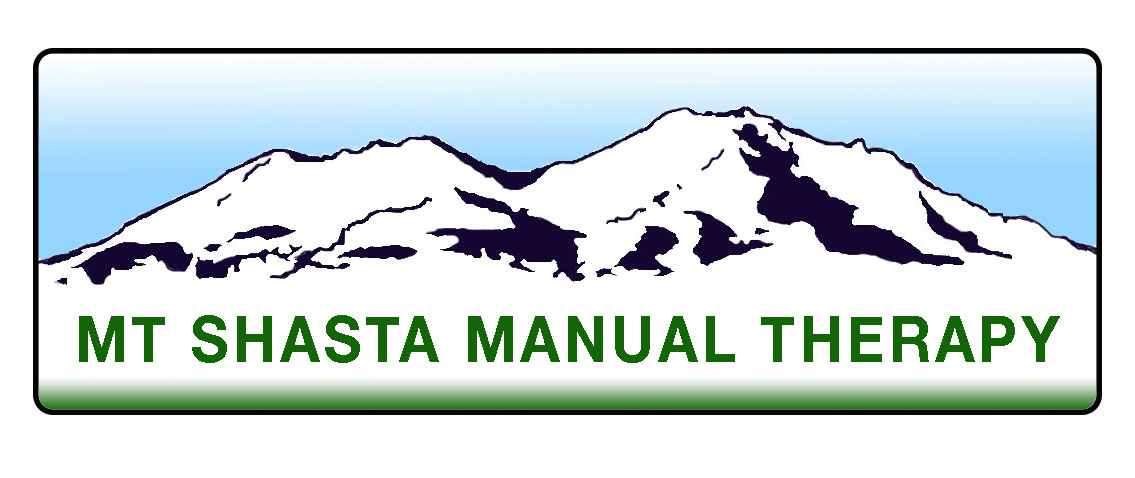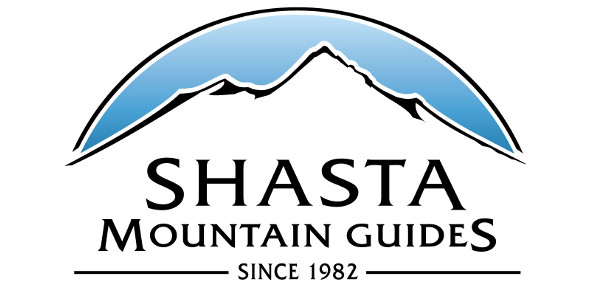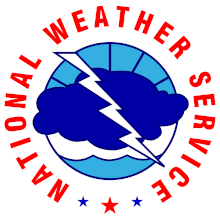You are here
Avalanche Advisory for 2015-12-17 07:00:27
- EXPIRED ON December 18, 2015 @ 7:00 amPublished on December 17, 2015 @ 7:00 am
- Issued by Jon Dove - Shasta-Trinity National Forest
Bottom Line
MODERATE avalanche danger exists near and above treeline. Pockets of CONSIDERABLE danger may be found on uniform, open W-SW-S-SE-E facing slopes steeper than 30 degrees, 7,500 to 8,500 feet. Near crust facets forming a persistent weak layer, 40-50cm deep in the snowpack, still warrant continued concern.
Wind slabs above treeline remain and exist on loaded NE-E-SE-S-SW slopes. Limited upper elevation observations leave uncertainty of wind slab sensitivity.
Below treeline, the avalanche danger is LOW
Avalanche Problem 1: Persistent Slab
-
Character ?

-
Aspect/Elevation ?

-
Likelihood ?CertainVery LikelyLikelyPossible
 Unlikely
Unlikely -
Size ?HistoricVery LargeLargeSmall

The obvious sensitivity of the persistent weak layer displayed by stability test results from December 13th (see videos) has added an interesting twist to our current snowpack structure. Stability tests were performed again yesterday in the same area as the Dec. 13th tests providing similar results. An extended column test was performed, as was a propagation saw test (see test results and scores below). The persistent weak layer has resulted in an air of caution amongst backcountry skiers/riders/snowmobilers as it is an avalanche problem that is not often an issue with our maritime snowpack. This caution is warranted as the sensitivity to added weight and disturbance to the snowpack in areas where the right combination of factors exist could result in an avalanche. That being said, the fact that no natural or human triggered avalanches have occurred is puzzling. It is a sensitivity that has been stubborn to trigger. It would seem that with the results of our many tests performed couple of days ago, and then again yesterday, the forecast area would see some avalanche activity. That has not been the case. This lack of evidence of this "sensitive" persistent weak layer is perhaps the result of our still shallow snowpack. The weak layer bed surface is not uniform and planar due to many ground protrusions still poking up into the snowpack disrupting uniform distribution. So, while yes a small 30 by 90 cm block will fracture and propagate, a full slope will not propagate due to rocks, stumps and down trees that are creating an uneven bed surface where the old rain crust in question exists.
With snowpack test results from yesterday confirming the weak layer is still sensitive, it should be noted that the persistent weak layer avalanche problem has not past. Persistent weak slab formations may still be present on the aspects listed above in the 7,500-8,500 ft. elevations near treeline. We do believe the persistent slab problem still remains an issue, especially with continued cold temperatures. While it remains difficult to trigger an avalanche on this layer if a user could find the right combination of weak layer with slab on top, it remains possible. There is hope on the horizon that the faceting that is occurring to the snow crystals around the suspect crust layer will begin to heal with warming temperatures today. Hopefully the facet growth will cease and the snow crystals will begin to round and bond with some melting influenced by warmer temps. The presence or absence of the avalanche problem will vary widely from one location to another due to depth of snow, aspect and elevation, and ground anchors/protrusions. The added weight of additional loading from wind slab development, a skier or rider, or snowmobile on this persistent weak layer could be enough to tip the stress vs strength scale where all ingredients for an avalanche come together perfectly. Be observant, be cautious, and travel accordingly.
For today, continue to avoid wide open, smooth and planar looking slopes just below, near and slightly above treeline in the 7,500 to 8,500 ft. elevation areas. The persistent weak layer has been found on NW-W-SW-S-SE facing slopes in this elevation band. Unfortunately, we cannot nail this weak layer down perfectly. It is your responsibility to get your shovel out, dig a pit and identify the presence or absence of the weak layer. Conduct a few stability tests before considering skiing or riding on suspect slopes!
Avalanche Problem 2: Wind Slab
-
Character ?

-
Aspect/Elevation ?

-
Likelihood ?CertainVery LikelyLikelyPossible
 Unlikely
Unlikely -
Size ?HistoricVery LargeLargeSmall

Strong northerly winds with the last storm cycle (Dec. 12th-13th) transported snow onto NE-E-SE-S-SW aspects. Due to lack of observations wind slab size and spatial distribution are not known. Winds were strong enough that the usual areas along ridge tops where wind slabs typically deposit have been wind scoured. Wind slabs have been deposited further down the slope below traditional avalanche start zones as well as creating shallow wind slabs near treeline. Avoid these areas by traveling in areas less than 30 degrees in slope angle without steeper terrain above. Even on scoured, windward aspects small wind slabs can develop. We've seen the full spectrum of wind loading on all aspects. Local orographics allow non-typical aspects to wind load on Mt Shasta. Over the course of the past week, we've had wind from all directions though the highest wind speeds have been blowing from the north/northwest. Once again, uncertainty exists for wind slab sensitivity to triggering due to lack of upper elevation observations. Watch out for near and above treeline terrain near/below ridgetops, on the leeward side of rocks and tree outcrops, round/hollow sounding snow pillows, shooting cracks, narrow couloirs and extreme terrain.
Forecast Discussion
An above freezing layer of air will move in behind the warm front that is pushing through the region today. Initial precipitation amounts will light around Mt. Shasta with some freezing rain possible at elevation from Mt. Shasta City to 10,000 ft. as the warm layer moves over. Precipitation models predict up to .36 inches of water for our area by the end of the day today. With snow levels hovering around 6,000 ft., up to 3 new inches of snow could fall on the mountains surrounding town. A stronger pulse of moisture should arrive on Friday with models that forecast close to 1.2 inches of water! Temperatures will cool a little by tomorrow and will continue to drop through Saturday with snow levels close to 4,000 ft. on Friday falling to near 2,000 ft. on Saturday. All this talk of ample precipitation and cool temperatures is enough to get a ski bum excited. The one draw back to all this storm activity, should it develop, is the strong winds that will accompany it. We'll just have to wait and see what affect those winds have on the snow that falls. Stay tuned.
THIS SEASON PRECIPITATION: Since October 1st (the wet season), we have received 7.17 inches of water, normal is 11.20 inches, putting us at 64% of normal. For the month of December, we have received 5.14 inches of water, normal is 3.84 putting us at 133% of normal. For the year of 2015 we've received 24.35 inches of water, normal is 39.20 inches putting us at 62% of normal.
Recent Observations
Observations made yesterday on and around Grey Butte revealed continued powder snow conditions in most areas below treeline. The snowmobiling was excellent in the meadows below and to the west/southwest of the Butte along the power lines. Supportable snow made for good carving of turns through the trees. On exposed slopes at near and above treeline locations the strong winds from a couple of days ago have buffed the snow's surface making a chalky wind crust and rounded wind slabs in exposed areas. The persistent weak layer that has been observed on W-SW-S-SE-E aspects at between 7,500-8,500 ft. has not been able to "heal" as of yet due to cold temperatures producing a significant temperature gradient in the upper half of the snowpack. This temperature gradient is what is influencing facet growth on the snow crystals within the crust layer lurking approximately 40-50 cm deep. A snow pit was dug, and a full pit profile was completed, at 7,583 ft on the WSW aspect of Grey Butte about 30 yards from where tests were performed and recorded on Dec. 13th. Similar snowpack structure and stability test results were observed with an extended column test scoring ECTP 7 Q2 at 45 cm deep failing at the interface with the suspect crust layer. The presence or absence of the persistent weak layer will vary widely from one location to another due to depth of snow, aspect and elevation, and ground anchors/protrusions. Continued wind loading, significant additional snow, or a skier/rider on this persistent weak layer could tip the stress vs strength scale where all the ingredients for an avalanche come together perfectly and trigger a slide. For this reason backcountry travelers should continue to tread lightly on near and above treeline areas on the aspects listed above due to the persistent weak slab and wind slab avalanche problems.
No observations were made yesterday above treeline for areas with wind slab formations. The sensitivity of wind slabs tends to decrease over time with the wind deposit snow bonding with the old snow surface in a matter of days, depending on temperature and other factors. Winds yesterday were calm, and the skies were clear form the majority of the day allowing for some solar gain on sun exposed slopes. This may have helped with the bonding of wind slabs to underlying snow. It would be a good idea to dig a snow pit and perform a stability test or two to gauge an areas sensitivity to extra loading before committing to travel across, or descending any suspect slopes.
Pit Profile from 12-16-2015 on the WSW aspect of Grey Butte: Jon Dove


"Testing the snow" on ACB - Photo: N Meyers
VIDEOS of ECT tests performed on 12.13.15:
The Sand Flat cross country ski trails are snow covered and ready for your cross country skis. These are backcountry trails marked with blue diamonds on trees. Trails are not groomed. Enjoy!
The Five Red Flags of Avalanche Danger any time of year include: 1) Recent/current avalanche activity 2) Whumpfing sounds or shooting cracks 3) Recent/current heavy snowfall 4) Strong winds transporting snow 5) Rapid warming or rain on snow.
Weather and Current Conditions
Weather Summary
Good Morning! In Mt Shasta City at 0500, we have a current temperature of 34 F, overcast skies and and light wind, 0-5 mph.
MOUNTAIN WEATHER STATION INFORMATION (0500hrs):
On Mt Shasta (South Side) in the last 24 hours...
Old Ski Bowl - 7,600 feet, the current temperature is 29 degrees F. Snow on the ground totals 30 inches with one inch new snow in the last 24 hours. Temperatures have ranged from 21 F to 30 F.
Gray Butte - 8,000 feet, the current temperature is 26 degrees F. Temperatures have ranged from 19 F to 30 F in the last 24 hours. Winds, variable in direction, have been blowing at 10-15 mph with gusts to 35 mph, averaging 13 mph.
Mt Eddy Range (West side of Interstate-5)...
Castle Lake - 5,600 feet, the current temperature is 28 degrees F. Temperatures have ranged from 17 F to 26 F in the last 24 hours. Snow on the ground measures 16 inches with no new snow and 1 inch settlement.
Mt Eddy - 6,500 feet, the current temperature is 26 degrees F. Temperatures have ranged from 23 F to 30 F. Snow on the ground measures 30 inches with no new snow in the last 24 hours and 3 inches settlement. Winds have averaged 2 mph and variable in direction with a max gust to 10 mph, SSE.
Always check the weather before you attempt to climb Mt Shasta. Further, monitor the weather as you climb. Becoming caught on the mountain in any type of weather can compromise life and limb. Be prepared.
| 0600 temperature: | 29 |
| Max. temperature in the last 24 hours: | 30 |
| Average wind direction during the last 24 hours: | Variable |
| Average wind speed during the last 24 hours: | 10-15 mi/hr |
| Maximum wind gust in the last 24 hours: | 35 mi/hr |
| New snowfall in the last 24 hours: | 1 inches |
| Total snow depth: | 30 inches |
Two Day Mountain Weather Forecast
Produced in partnership with the Medford NWS
| For 7000 ft to 9000 ft | |||
|---|---|---|---|
|
Thursday (4 a.m. to 10 p.m.) |
Thursday Night (10 p.m. to 4 a.m.) |
Friday (4 a.m. to 10 p.m.) |
|
| Weather | Cloudy. Snow likely, possibly mixed with freezing rain, becoming all snow after 11 am. | Cloudy. Snow likely, windy. | Cloudy. Snow, windy |
| Temperature (°F) | rising to 32 by 8 am then falling to around 28 | by 2 am rising to around 32 | 32 |
| Wind (mi/hr) | South 10-15 mph with gusts to 25 mph | South 15-20 mph, increasing after midnight to 20-25 mph. Winds could gust to 35 mph | South 15-20 mph with gusts to 35 mph |
| Precipitation SWE / Snowfall (in) | / 1-2 | / 1-3 | / 5-9 |
| For 9000 ft to 11000 ft | |||
| Thursday | Thursday Night | Friday | |
| Weather | Cloudy. Snow, possibly mixed with freezing rain, becoming all snow after 10 am. | Cloudy. Snow likely before 4 am, then snow likely. Windy, wind chill values as low as -8 | Cloudy. Snow, and windy. Wind chill values as low as -15 |
| Temperature (°F) | 27 | 22 | 21 |
| Wind (mi/hr) | West 30-35 mph, gusts to 50+ mph | Southwest 1-3 | Southwest 45-50 mph with gusts to 60+ mph |
| Precipitation SWE / Snowfall (in) | / 1-3 | / 3-5 | / 9-13 |


























































